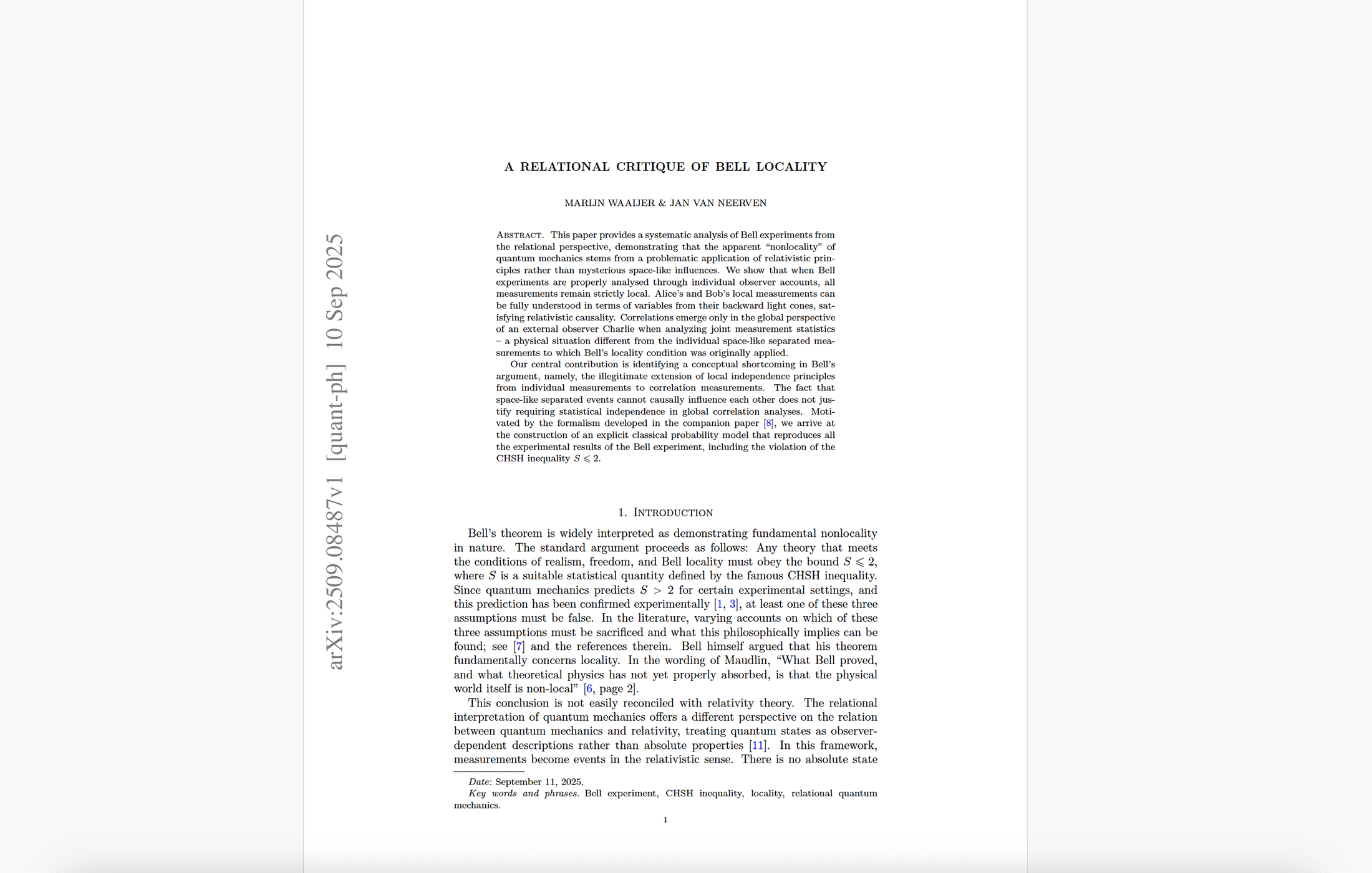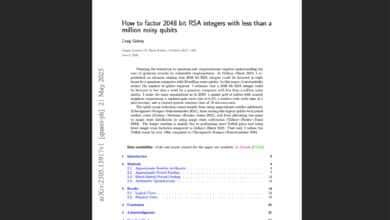New Paper Alert: A Relational Critique of Bell Locality

Sep 2025 – I usually highlight papers with clear practical implications for quantum computing and quantum security. Every so often, though, a foundational paper is intriguing enough to warrant attention – this one struck me that way, and I think it may interest you too. Just a few days ago Waaijer and van Neerven published a paper “A Relational Critique of Bell Locality” in which they analyze Bell experiments through the lens of relational quantum mechanics (RQM).
For decades, Bell’s theorem has been seen as proof that nature is fundamentally nonlocal. Any theory that respects relativity and allows free choice of measurements must obey the CHSH inequality (S ≤ 2). Quantum mechanics predicts – and experiments confirm – violations (S > 2). The conclusion seemed inescapable: reality is not locally causal.
This new paper argues this conclusion is a mistake. The authors claim the apparent nonlocality stems from misapplying relativistic principles.
The Core Argument: Local Events vs. Global Correlations
The key insight comes from Relational Quantum Mechanics (RQM), where measurement outcomes are observer-dependent, not absolute facts.
From this view, Alice’s and Bob’s measurements in a Bell experiment are separate relativistic events. Each outcome is determined solely by factors in their own backward light cones. There is no spooky action-at-a-distance at the moment of measurement.
The famous correlations only appear later, when a third observer, Charlie, compares their results. This joint analysis is a different physical situation than the individual local measurements. The authors argue that Bell’s locality condition – which requires the statistical independence of Alice’s and Bob’s results – illegitimately extends a principle that rightly applies to individual events to this global correlation measurement. Relativity forbids causal influence outside a light cone, but it does not forbid statistical correlations that emerge from a common source or a global perspective.
A Classical Model that Beats Bell’s Limit
To prove their point, the authors construct an explicit classical probability model that perfectly reproduces all quantum predictions, including the maximum CHSH violation of S = 2√2.
Crucially, their model is “local” in the relational sense:
- Individually, Alice sees random outcomes, completely unaffected by Bob’s distant setting choice, and vice versa. No faster-than-light signaling is possible.
- Globally, the joint statistics are strongly correlated and do not factorize, violating Bell’s statistical independence condition (A3).
The model works because it treats the measurement settings not as independent free variables but as part of the global context, a move that aligns with RQM’s rejection of an absolute, observer-independent reality.
What Does Bell’s Theorem Really Prove?
This does not reveal a flaw in Bell’s mathematics. His theorem correctly proves that no theory satisfying all three assumptions (Realism, Freedom, and Bell Locality) can violate S ≤ 2.
The authors’ model simply chooses to reject a specific interpretation of “Bell Locality.” They argue that requiring statistical independence for joint analysis oversteps what relativity actually demands. By giving up on a single objective reality (a tenet of RQM) and the strict independence of settings from the system state, they create a logically consistent local account.
Conclusion: A Philosophical Choice, Not a Physical Refutation
This paper doesn’t overturn Bell’s theorem; it reframes its lesson. The choice isn’t between “locality” and “realism” but between different conceptions of them.
- The mainstream view sacrifices locality, accepting that correlations are fundamental and nonlocal.
- The relational view sacrifices global realism, accepting that outcomes are only definite relative to an observer and that correlations are woven into the fabric of a non-absolute reality.
The Waaijer-van Neerven model is a compelling formal demonstration of this latter path. It won’t convince everyone – it requires accepting a relational ontology or the superdeterministic-like correlations that come with it. But it rigorously shows that the door for a local understanding of quantum mechanics, given the right philosophical framework, is not closed.



